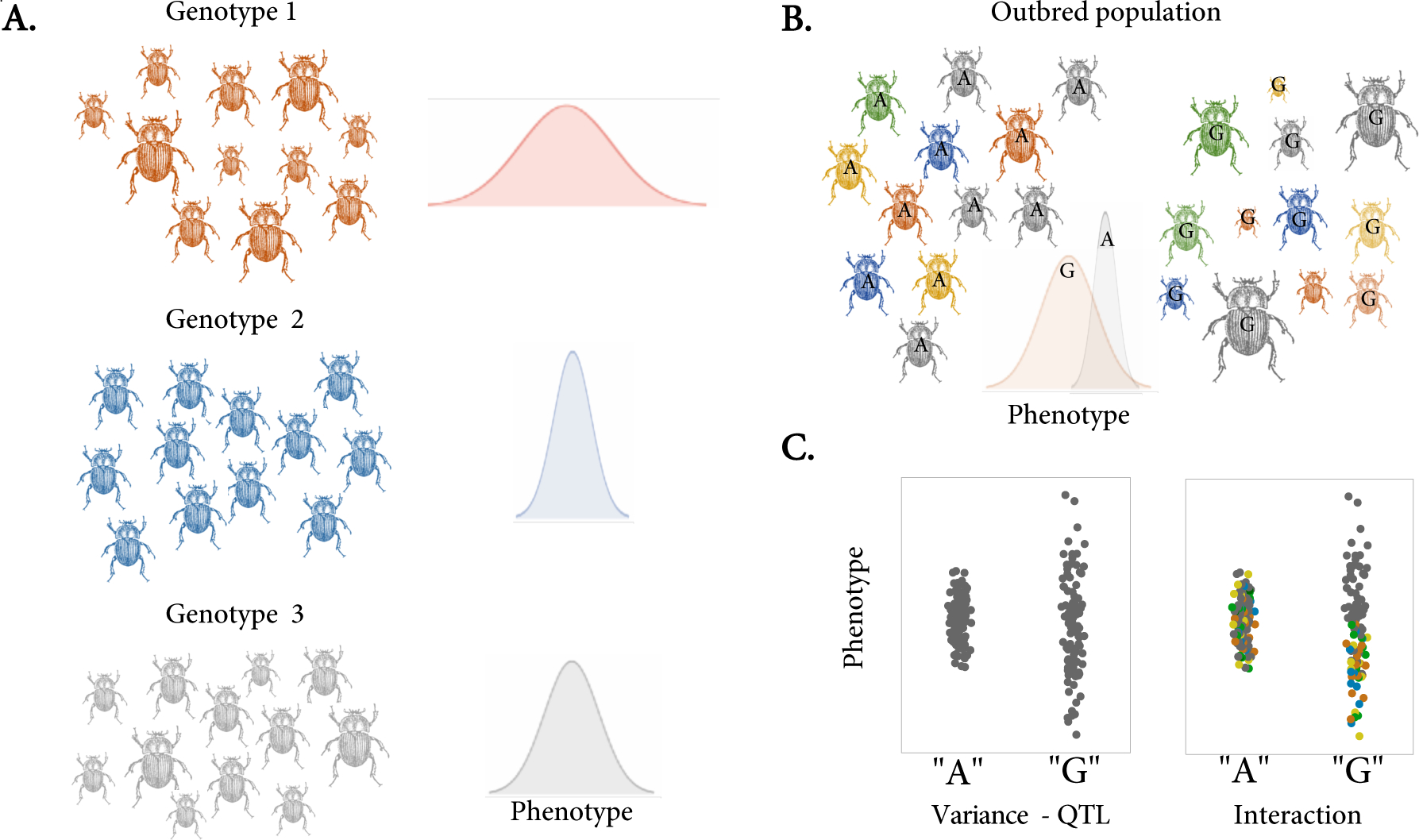Figure I.

Evolutionary trajectories of the mean and variance in a trait. Contour lines depict the fitness landscape, corresponding to Fig. 1g (see main text). For clarity, we only show contour lines here. Green dots indicate the trait combination resulting in the highest fitness. Starting from a population with a low mean trait value and no variance (black dots), trajectories towards the fitness optimum (green dots) are shown, for varying genetic variances and covariances, using the multivariate breeder’s equation [99]. Additive genetic variances for the mean (VA-mean) and variance (VA-variance) in phenotypic trait were both set at 0.1, and their covariance (covA(mean, variance)) at 0. We then, one by one, varied these variance components, while keeping the rest of the G-matrix constant. We assessed how the phenotypic mean and variance evolve over the course of 200 time steps. Graph on the left shows the effect of varying values for VA-mean′ middle graph shows the effect of varying VA-variance′ and graph on the right the effect of changes in covA)(mean,variable). Different colors correspond to the range of values for the variable (see legend). Note that we considered a constant genetic variance-covariance matrix within each scenario, an assumption which might be often violated in natural population [100,101] and/or when environmental conditions change through time [102]
